50% of customers needed financing, but the exsisting process was slow, inefficient, and insecure—highlighting the need for a product to streamline and safeguard the experience.

Paper-based applications for financing caused three key issues:
This project evolved into a three-part product initiative:

Securing financing is a core component of any home improvement business. The company was struggling with a slow and fragmented financing process, despite 50% of their customer base seeking financing to fund projects.
The sales representatives, financing department, and ordering department would work together to secure financing and start off projects.
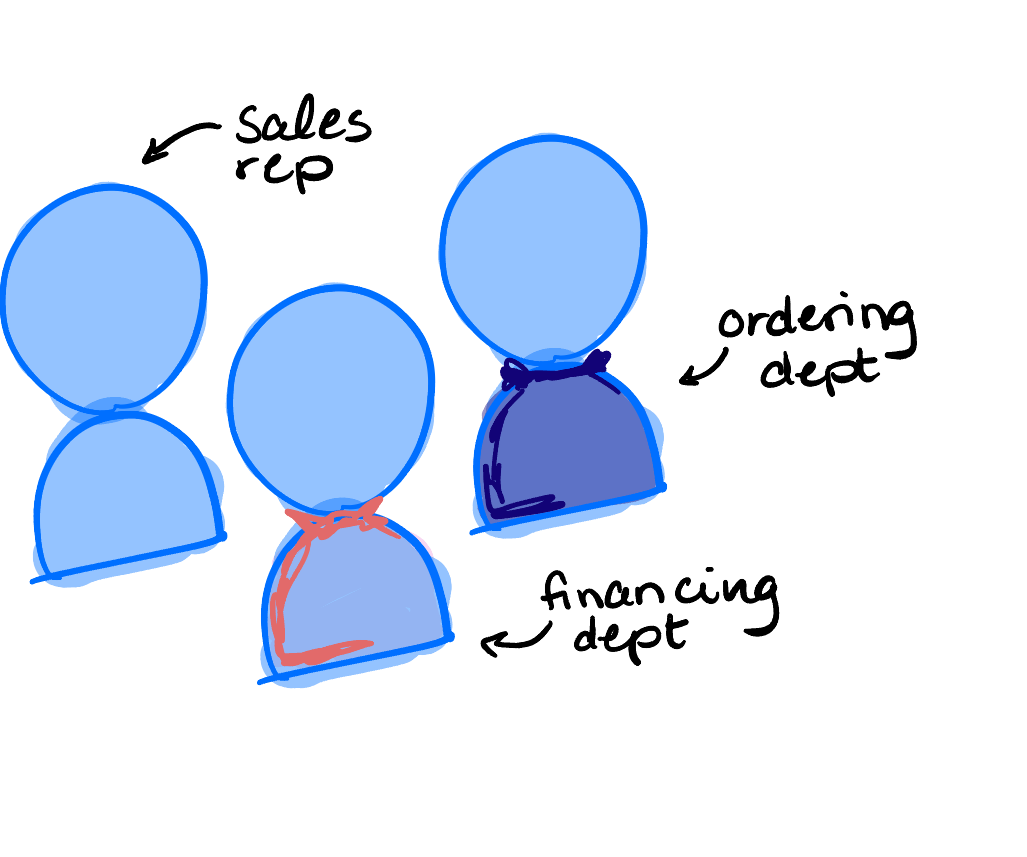
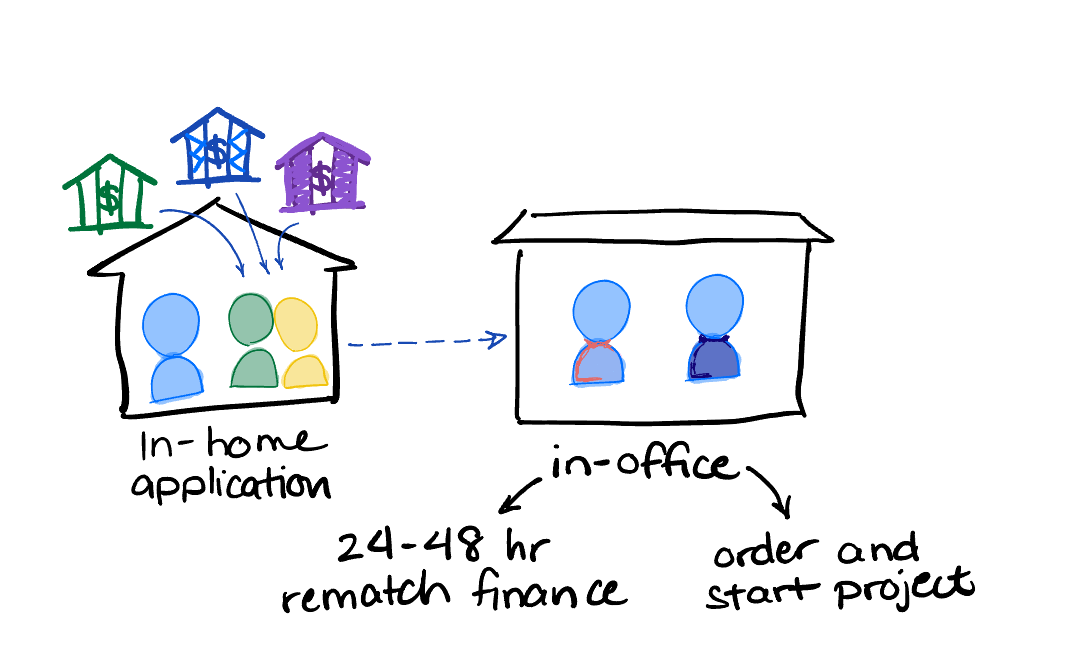
In their process, sales representatives opened different lender apps on their tablets for customers to apply for financing. If a customer was not approved, the financing department then relied on a separate, insecure paper form for secondary lending, creating a significant bottleneck. This disjointed workflow caused delays for the ordering department, which had to manually verify funding, leading to a poor customer experience and stalled projects.
Once a customer selects a program, the sales rep initiates the digital application while the customer fills out a contingency paper form for secondary lending.
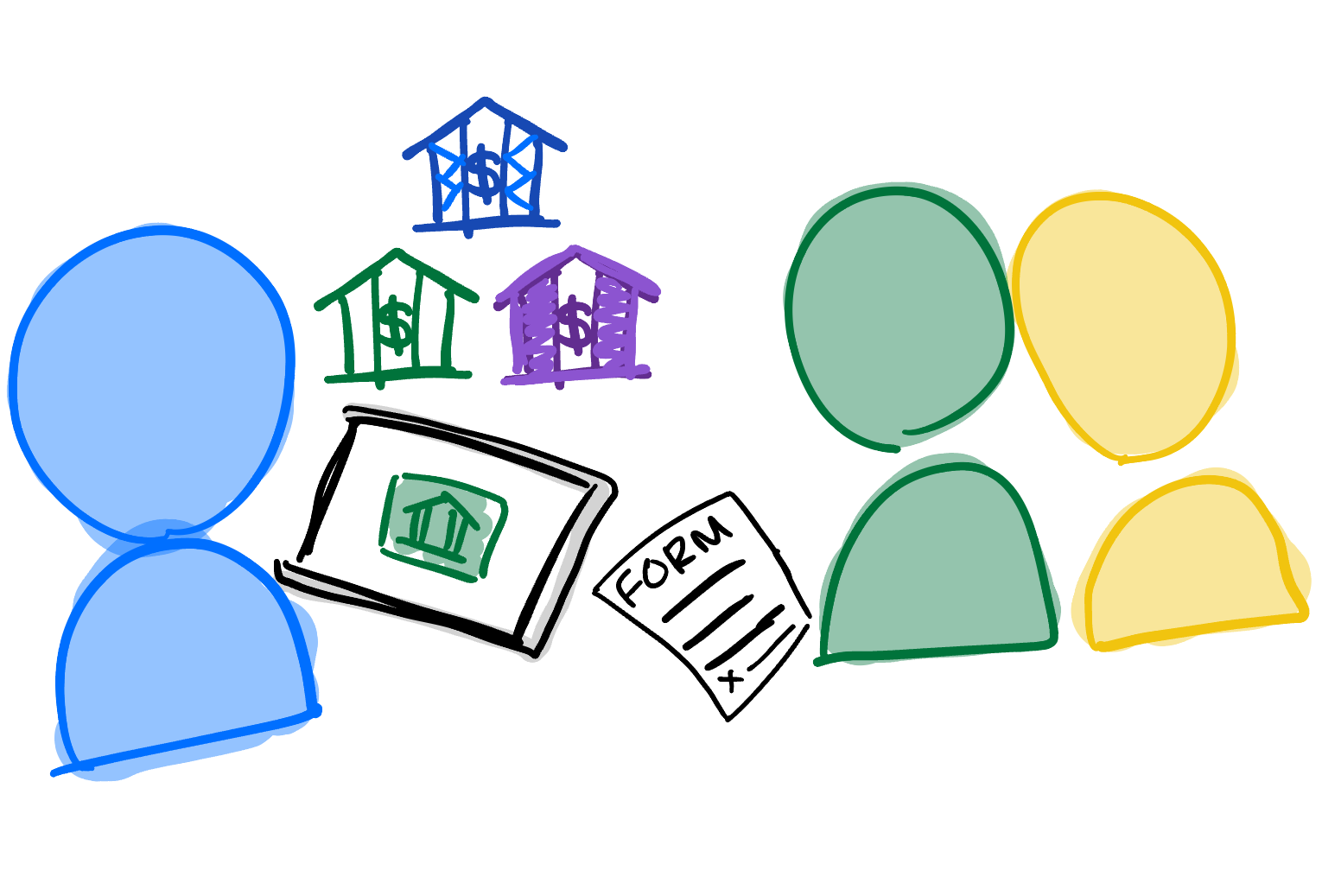
While waiting on lenders result, the customer completes the paper form, with the option to add a co-applicant.
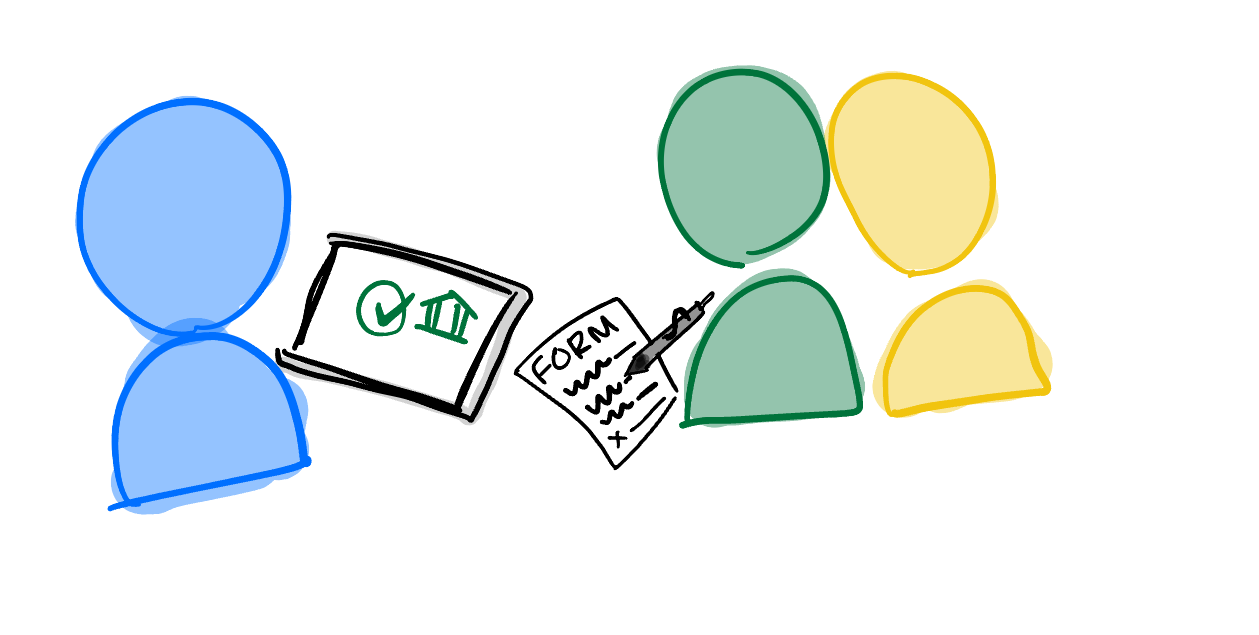
Approved: The ordering team confirms customer approval by manually checking email inboxes and multiple lender portals.
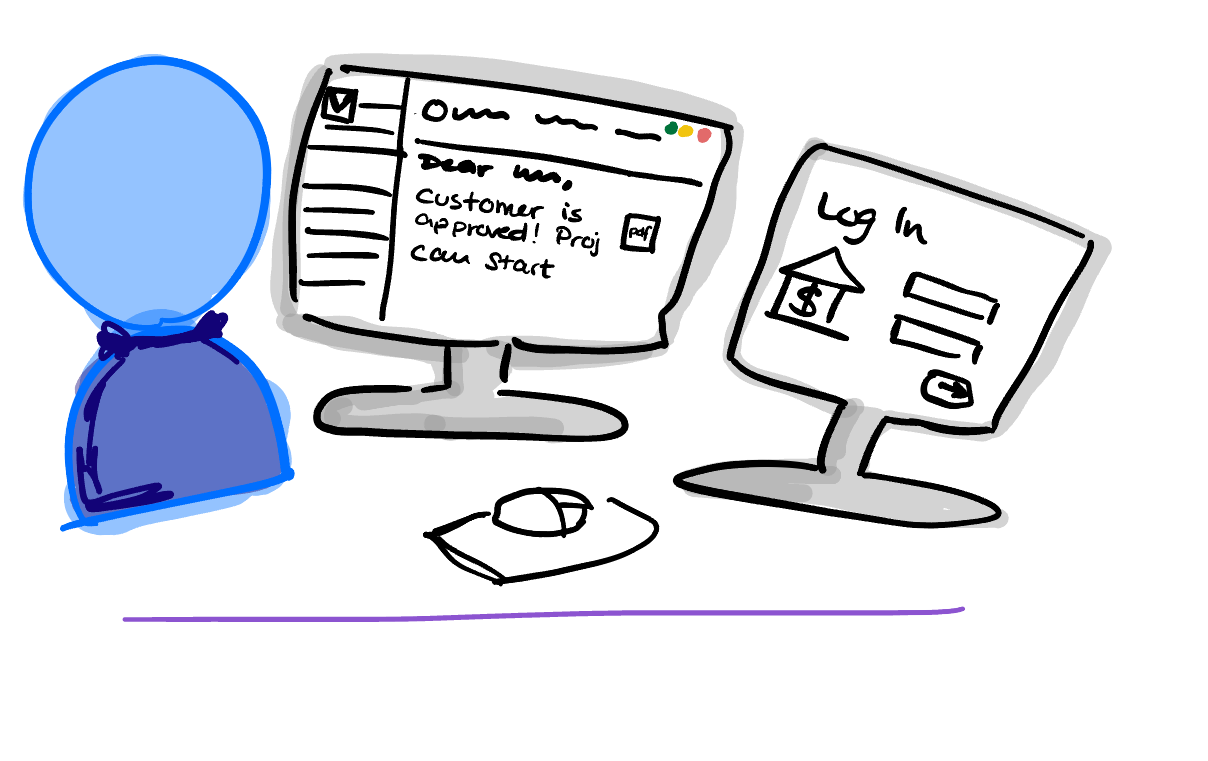
Denied or Partial Approval: The financing team checks email, pulls up the paper form, and matches customer to secondary lenders
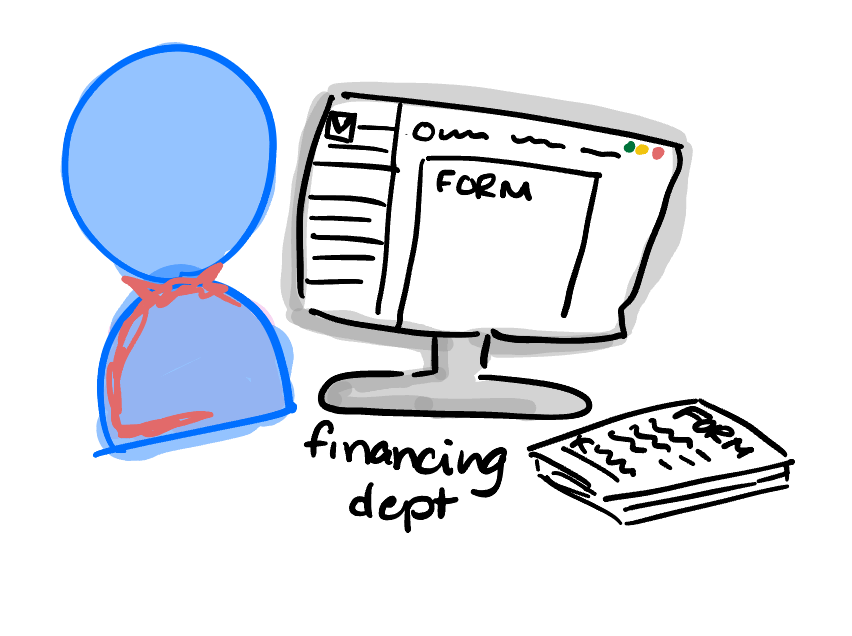
My research highlighted a three-way challenge: improving communication between internal teams without compromising customer data security or the legal compliance required by lending programs. Therefore, I needed to outline specific requirements to ensure these core focuses weren't lost in design or development.

Aggregating the work further, I quickly learned this app was part of a wider 3-step process. We needed to consider idea spaces for each requirement as it related to applying for financing, getting a lender result and connecting back with out internal teams.

After selecting a lender, triggering with lender APIs to connect, the sales rep sends a secure application directly to the customer from their tablet.
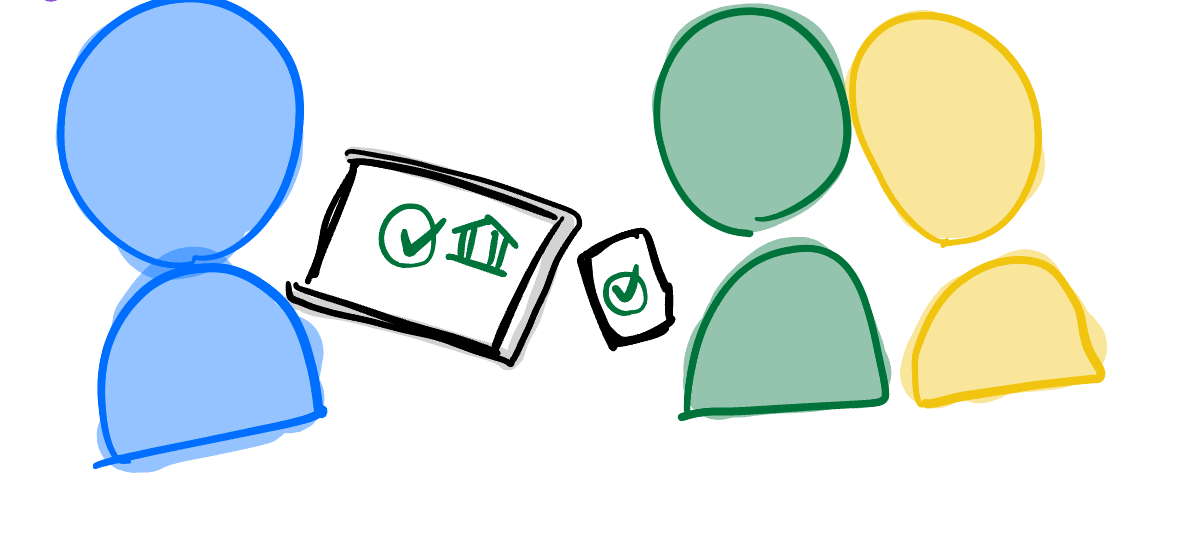
The customer completes the form (with or without a co-applicant) and lender returns a result.
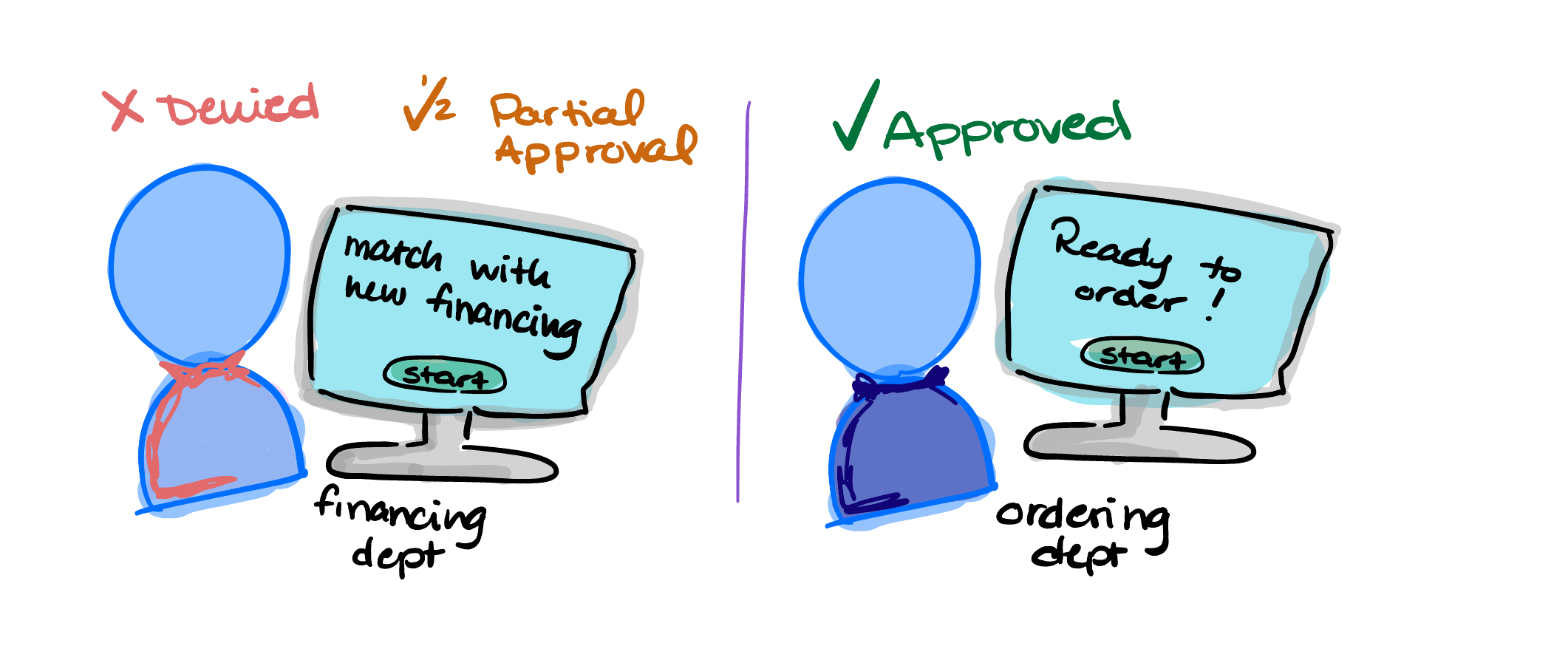
Based on the result, the application is sent to the right team to wait in the respective processing queue.



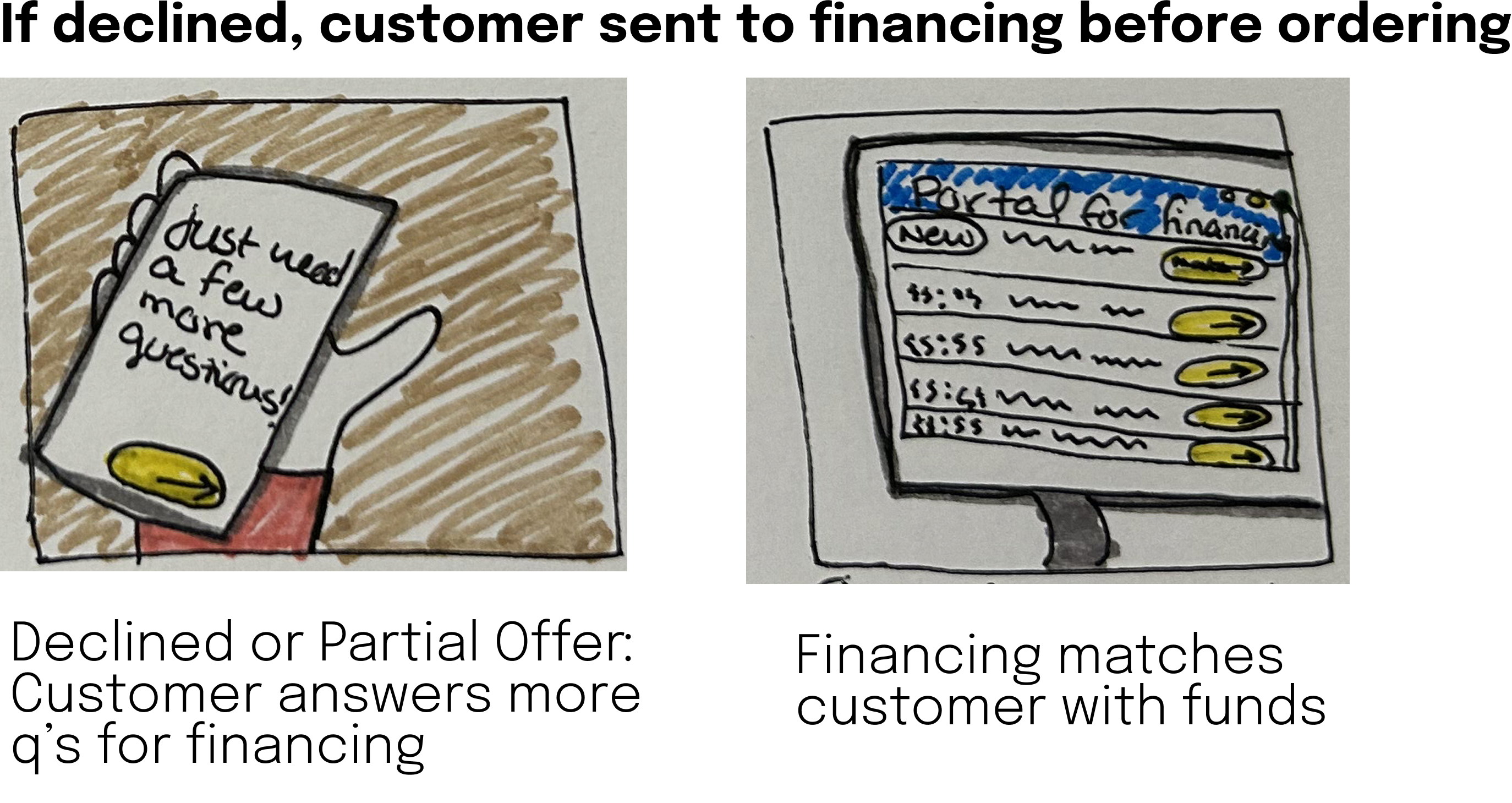
Considering two different ideas to ensure financing and ordering get status updates.
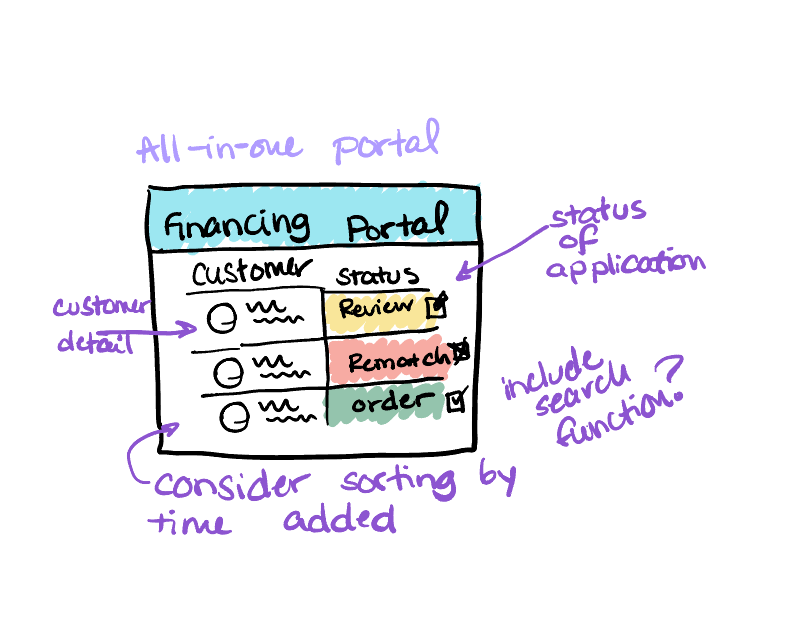
All in one portal -- all departments can access info from one place
Two different portals
1) financing to look at application details and send to ordering team
2) ordering team checks status send
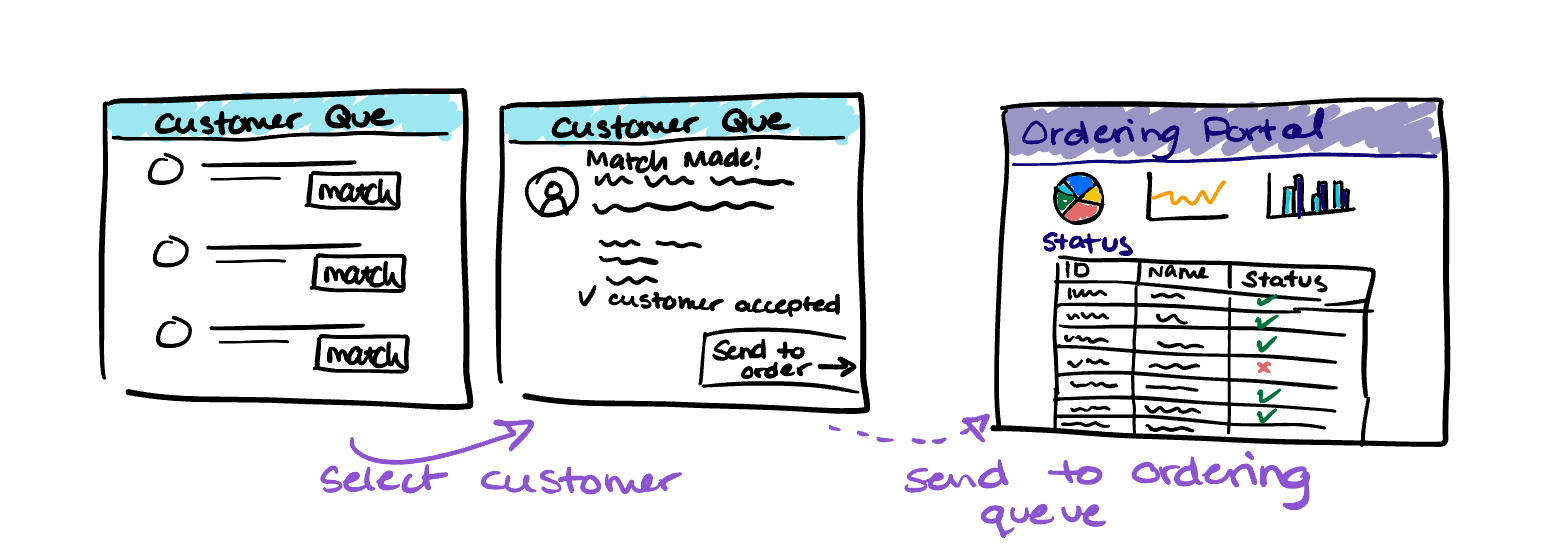
Have devices connect between sales rep and customer -- ensuring legal's compliance on ensuring customer is applying with their personal information (not sales rep). Collect IP address from different devices
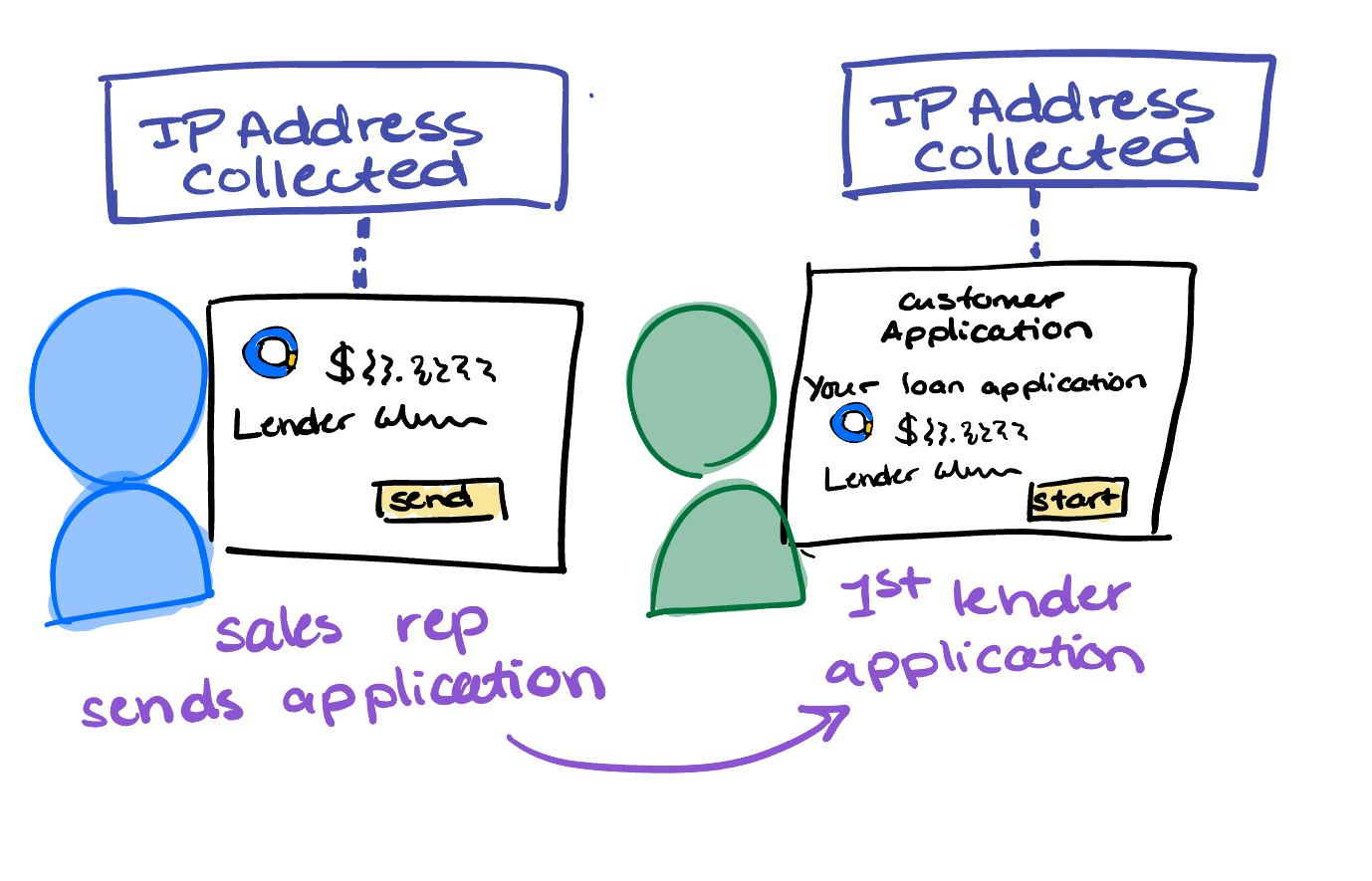
consider two types of question formats
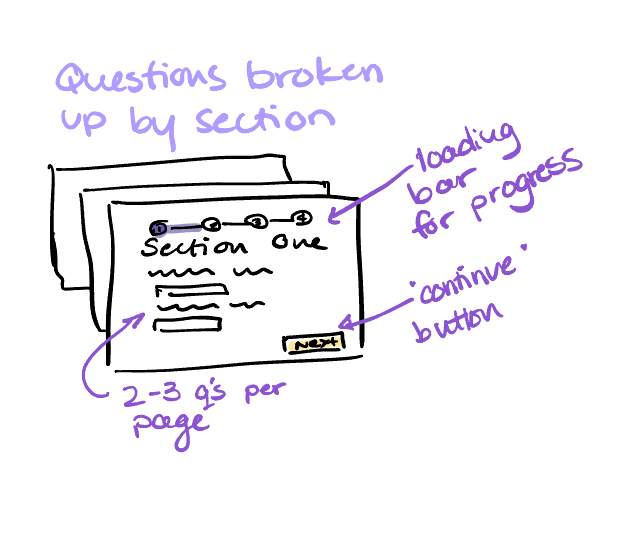
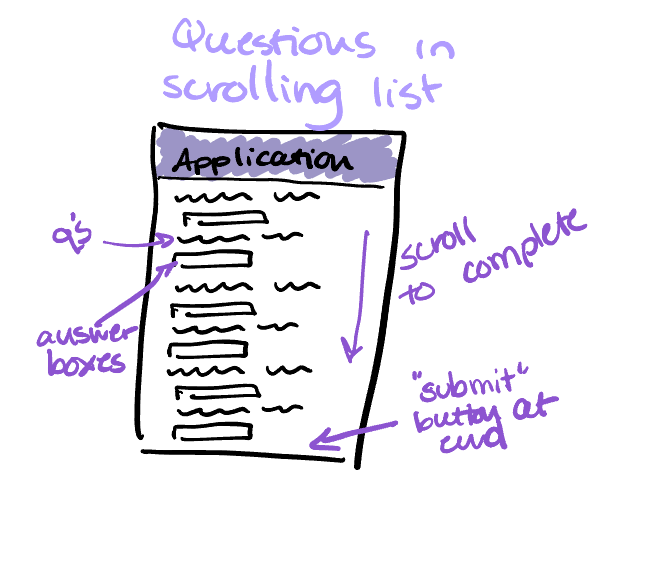
How can we ensure customer privacy within the application and the business' internal systems?
To explore this space, our IT and data engineers added additional requirements.
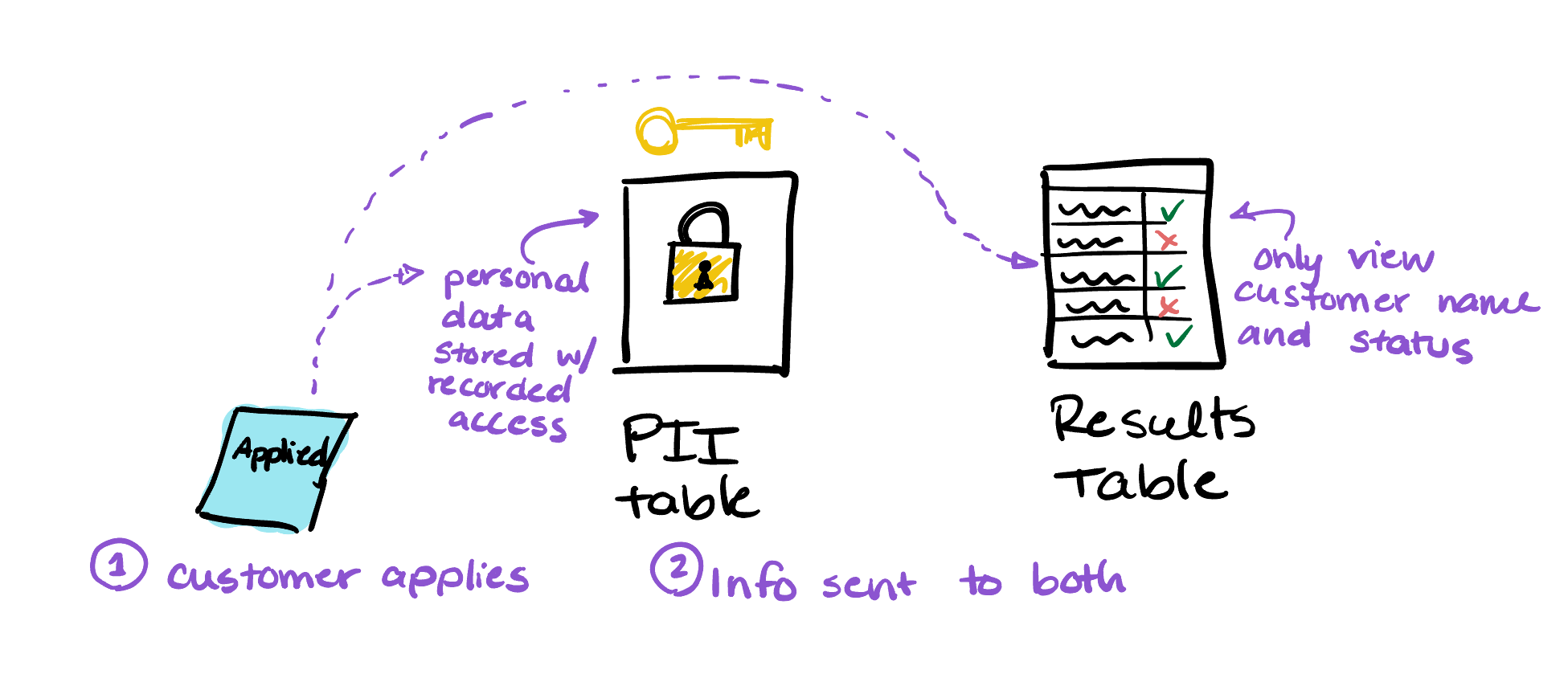
I needed to copy the current system (original paper form) and the current lender needs in their API documentation

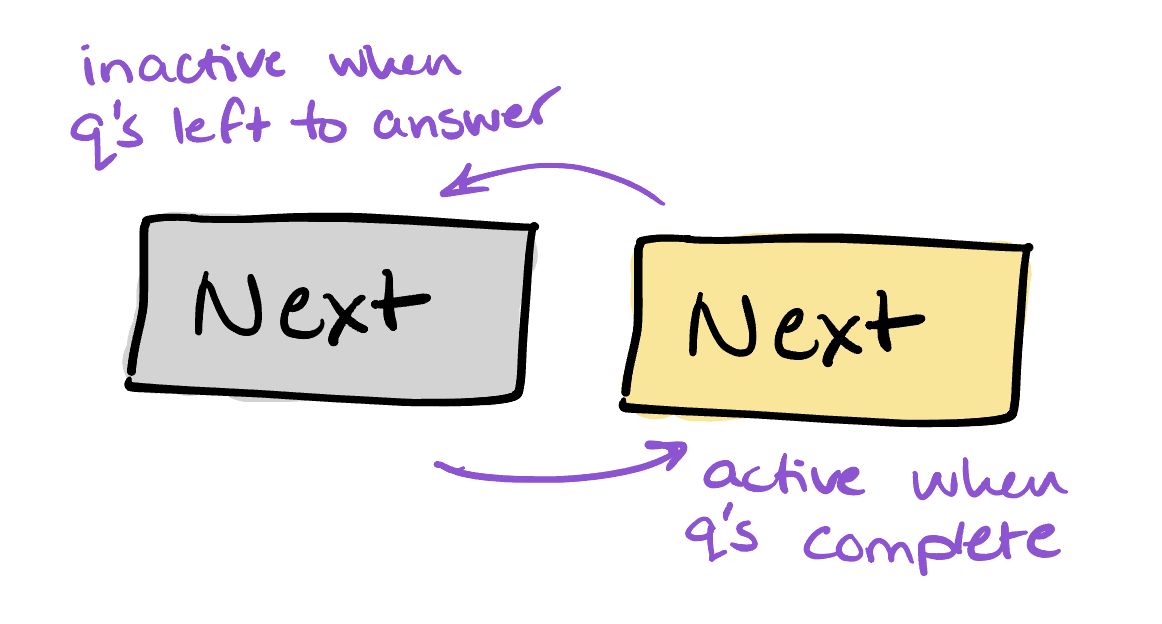
Pulling the IP address would help decide which programs sales reps could select and connect to customers devices
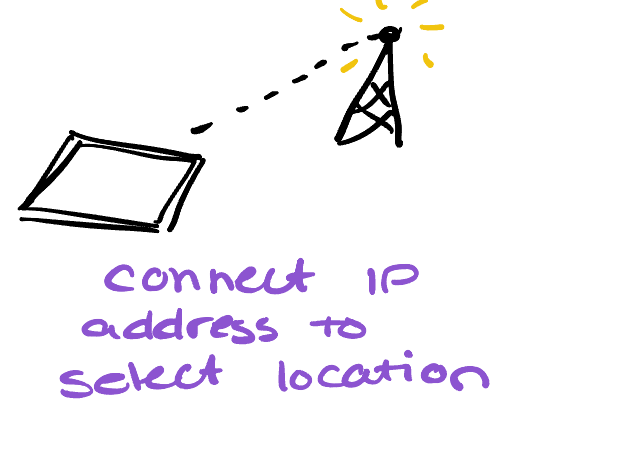
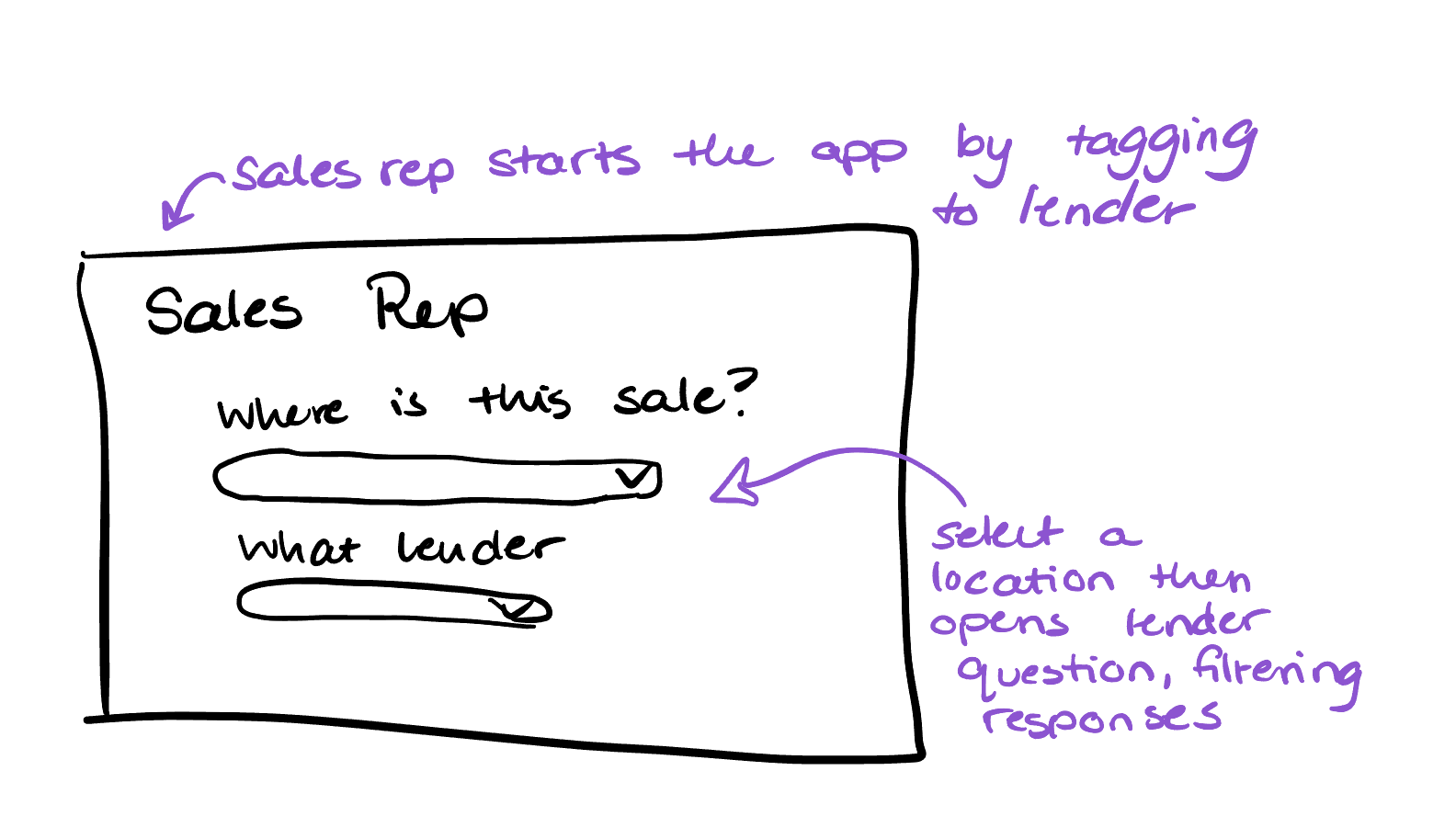
Faced with an aggressive deadline—a pilot launch mandated just one week after UAT—our team rapidly defined a solution that balanced business goals with feasibility. We moved forward with the following decisions:
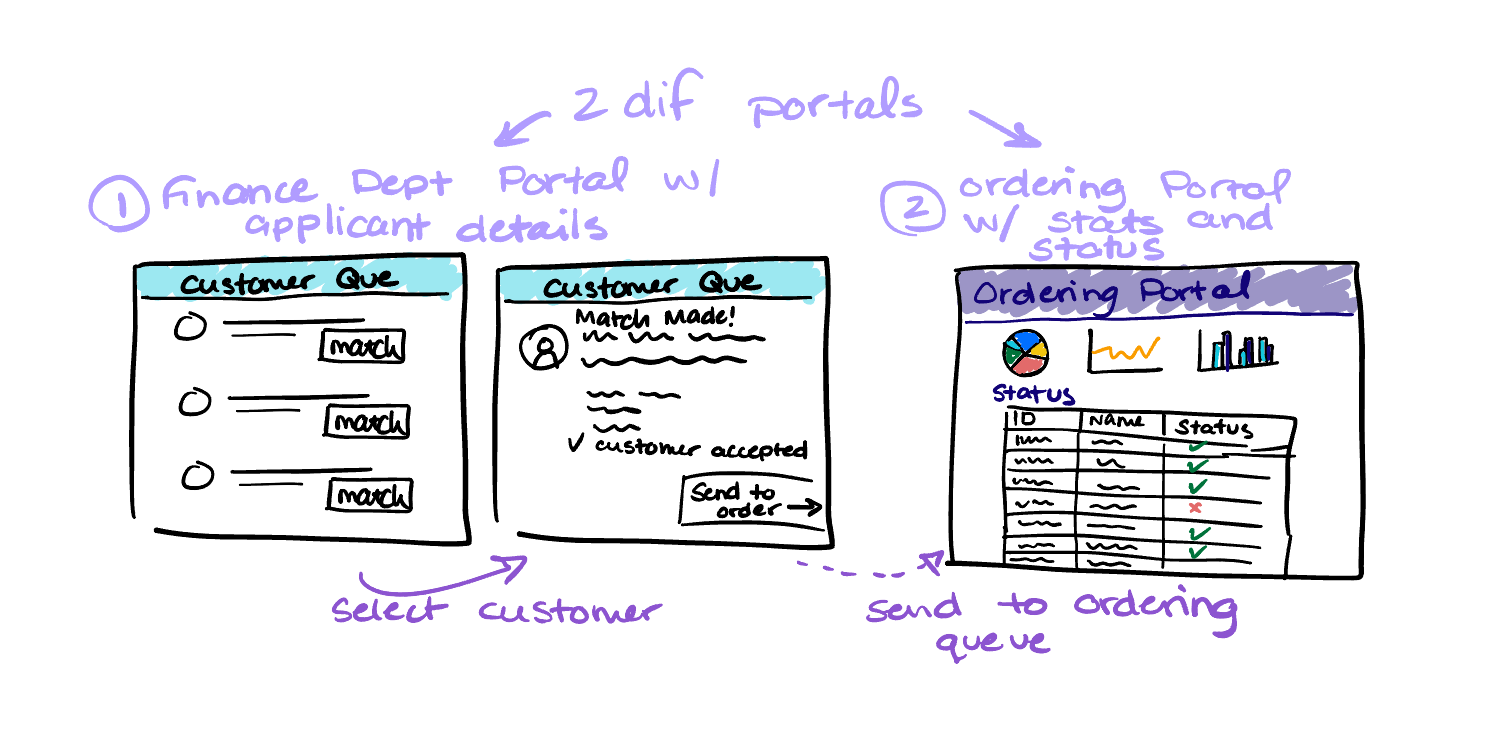
Two-portal system
Ordering and Finance need separate systems due to different workflows and to protect sensitive customer data like SSNs and income info.

Questions sorted by section
Breaking questions into pages made the process feel faster for customers and helped sales reps track progress more easily.

Collecting IP addresses from devices
New idea that emerged mid-feedback gave the business leadership more confidence in confirming it's the customer applying—not a sales rep
The sales team noted the new practice is easy to implement with training, while Dev and Data teams can quickly update existing tables with the necessary information.

Data security via two tables
Recording access to secure tables meets compliance, while dev and data teams say two tables make it easy to manage data flow and protect personal info.


Ensuring questions are answered
Required questions are easy to implement with backend APIs and ensure Finance gets all necessary answers.

Sales rep chooses lender
Users prefer selecting their area to see available lenders, making it easier for devs to connect the right lenders via a lookup table.

Our prototype served as the basis of everything. We created a version 1 to launch and then learned about the iterations necessary to make it even more useful once launched in the field.
To start designing, I led the team in synthesizing our ideas into a cohesive workflow, which led us to delegate the design tasks. I took ownership of the customer experience flow, while a fellow designer created the internal portal.
The features we created were tested with business stakeholders, sales reps and users from our customer demographic. Once we received several rounds of feedback, we finalized designs and shared them with lenders for their final compliance checks.





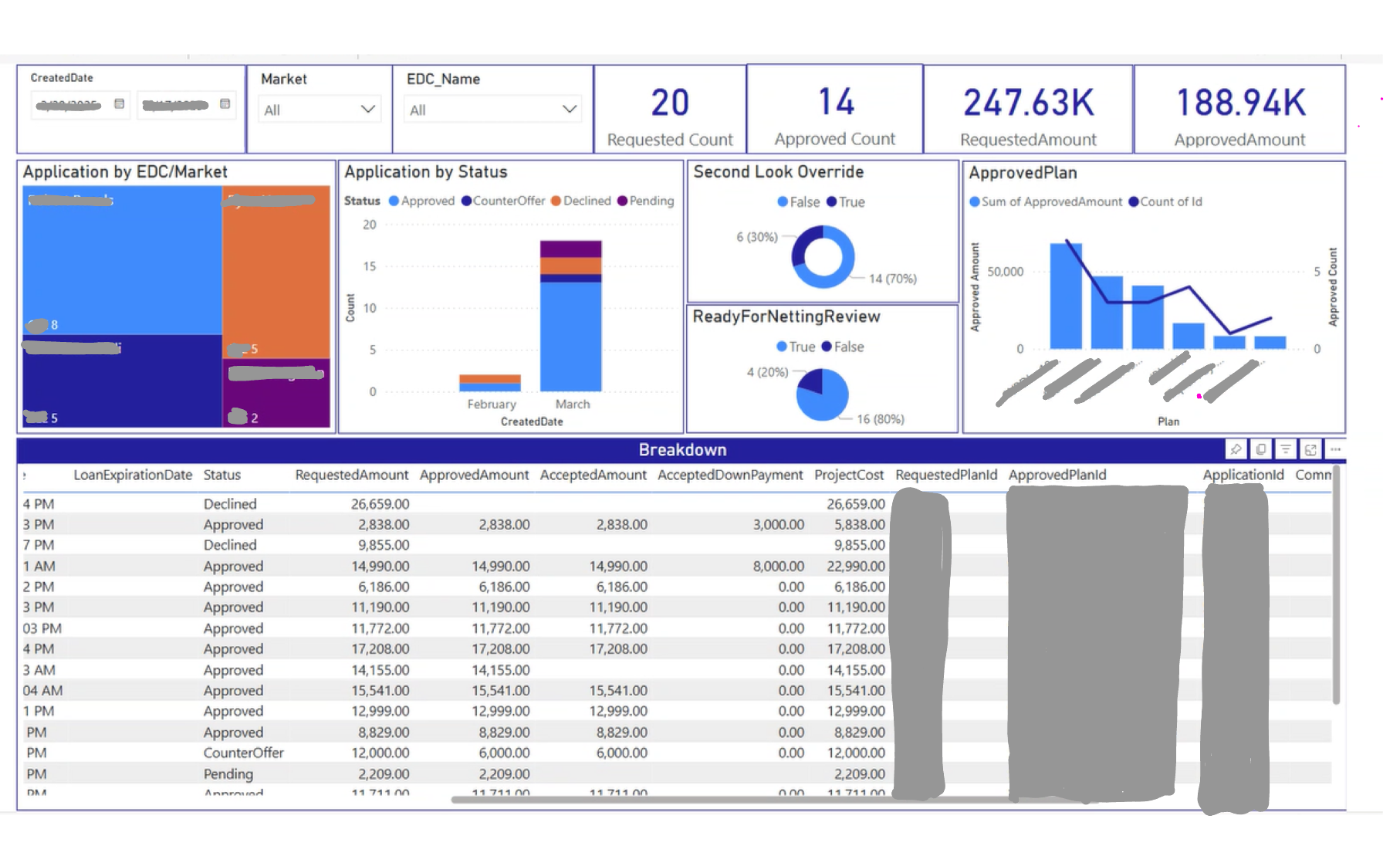
We tested with a representative sample of 8 users from our target customer base.
Using my discovery-ideate-design process, I dove deeper to explore how to repair our teams' synergy.
realized the dev teams were struggling to understand the complex workflow.

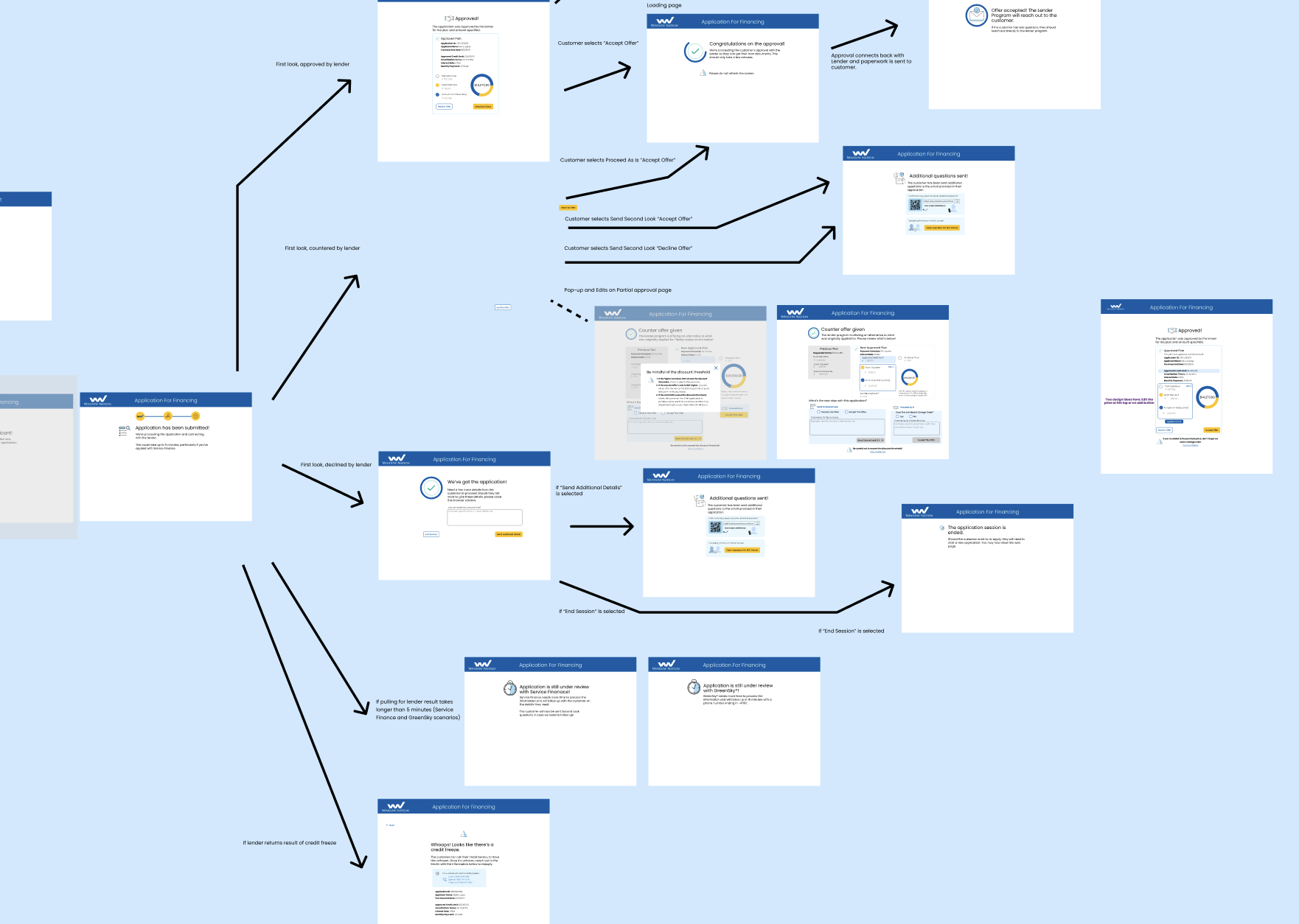


As we all know, once a product is published, the new sprint of keeping it aligned with user input rivals an olympic sport. Here's what came of this product's iterations as we kept learning and adapting to feedback
"We're turn around a new lender deal in less than 2 hours, while it would have taken about 24-48."
- Financing department
⚠️ Issue: Needed a secure method to ensure we have recorded that the customer is applying
💾 Iteration: Make consent waiver and integrate with application process
🚀 Impact: Reduced legal risk, Reduced in-home technical issues for sales reps by 60%, improving overall efficiency and minimizing delays during application processing. Reduced sales reps need for after hours technical support by 76%.
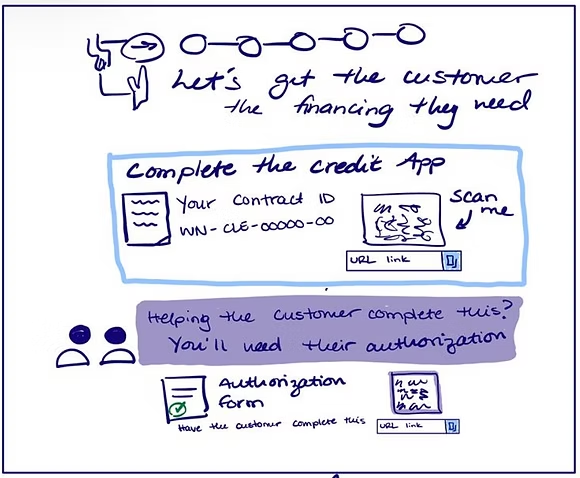
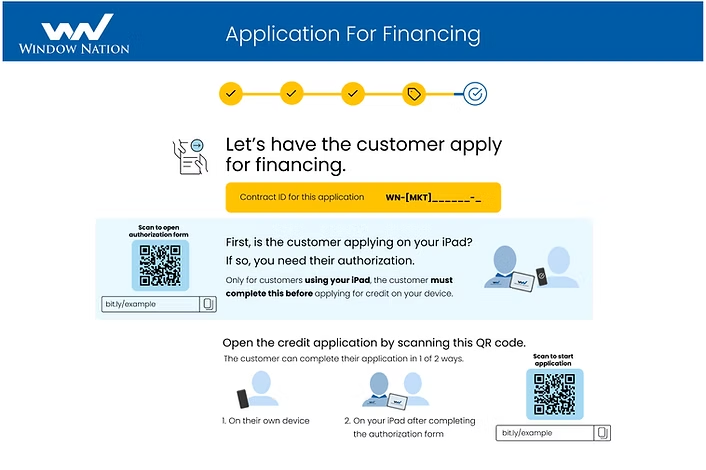
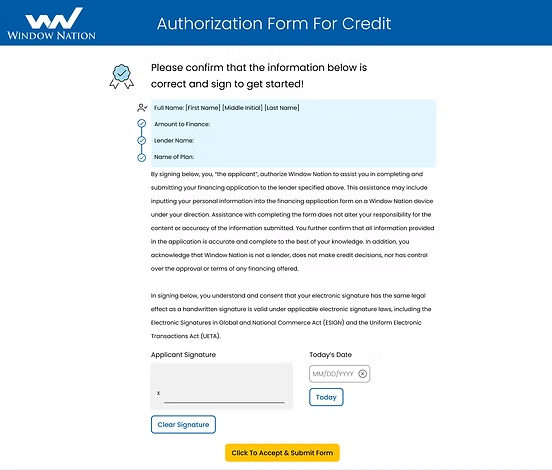
⚠️ Issue: Operations and Sales reps were using the portal to check on the first lender application
💾 Iteration: Revised mock-up making status more clear
🚀 Impact: Clearer to see status and report on productivity metrics to leadership, saving 20 mins reporting gathering.


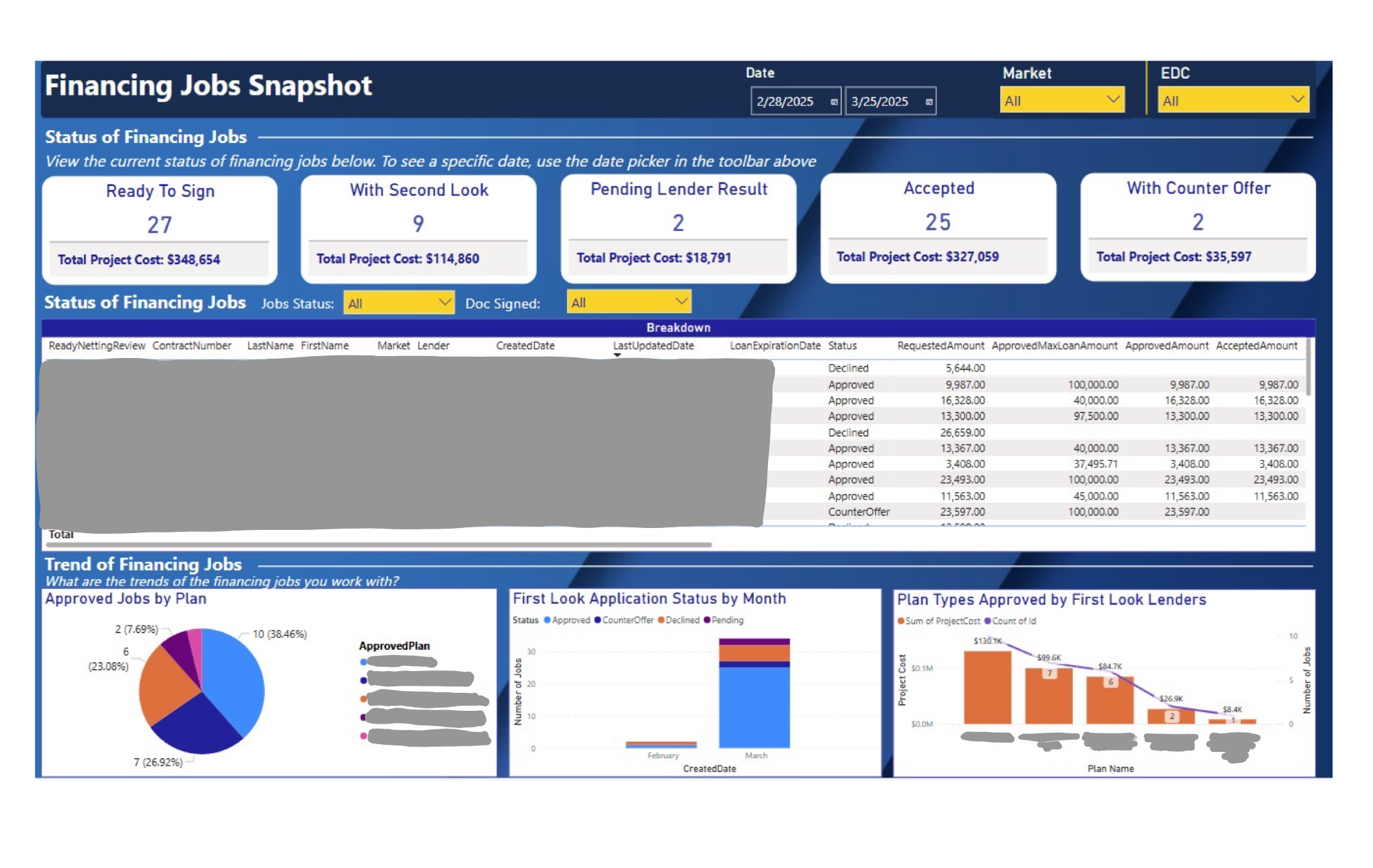
⚠️ Issue: Customers were losing interest completing all banking questions
💾 Iteration: Shortened questions by having specific paths for each lender as some lenders asked more questions than others.
🚀 Impact: Customers saved an average of 5 mins when completing questions (depending on the lender chosen)